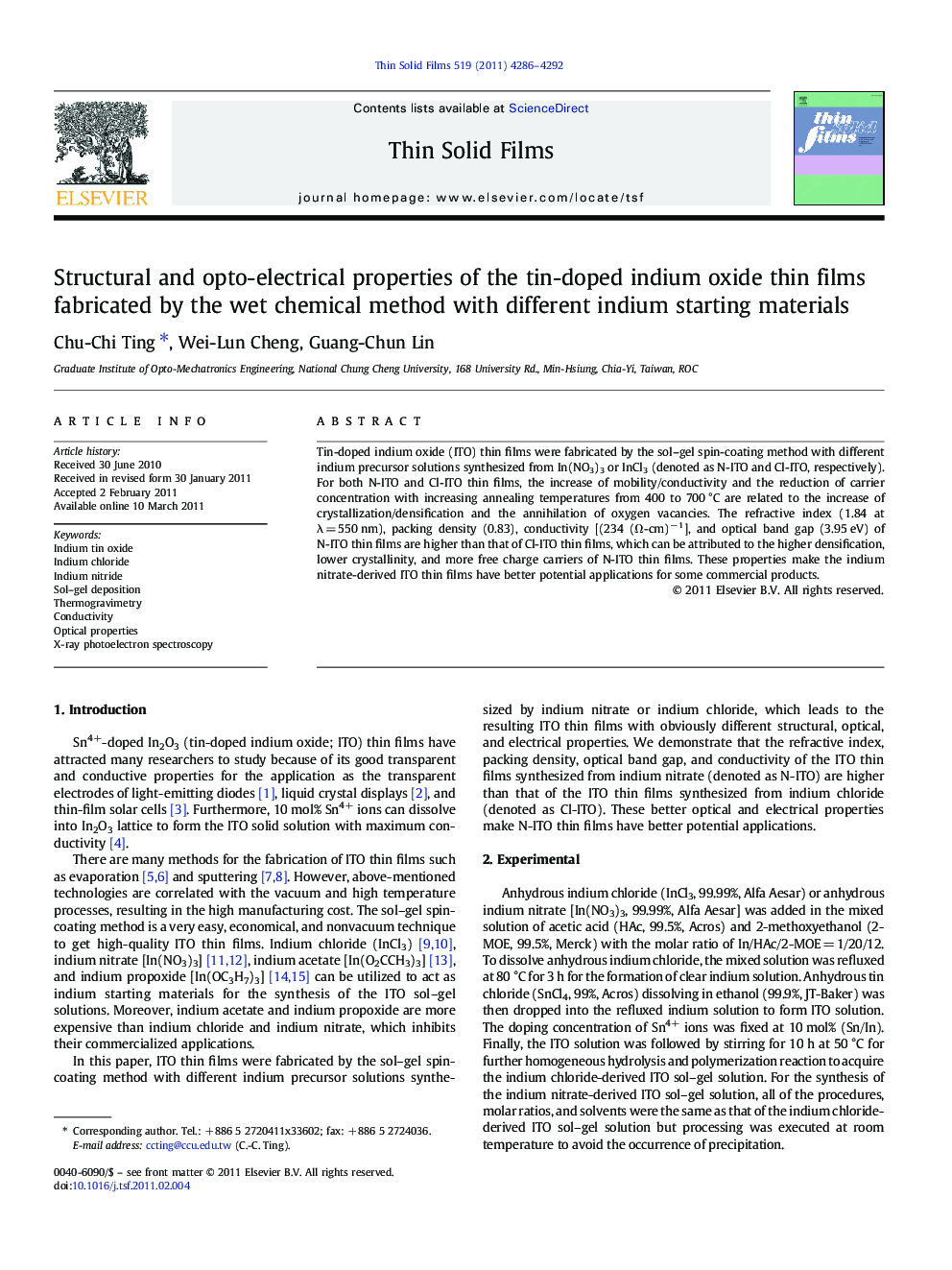| Article ID | Journal | Published Year | Pages | File Type |
|---|---|---|---|---|
| 1668636 | Thin Solid Films | 2011 | 7 Pages |
Tin-doped indium oxide (ITO) thin films were fabricated by the sol–gel spin-coating method with different indium precursor solutions synthesized from In(NO3)3 or InCl3 (denoted as N-ITO and Cl-ITO, respectively). For both N-ITO and Cl-ITO thin films, the increase of mobility/conductivity and the reduction of carrier concentration with increasing annealing temperatures from 400 to 700 °C are related to the increase of crystallization/densification and the annihilation of oxygen vacancies. The refractive index (1.84 at λ = 550 nm), packing density (0.83), conductivity [(234 (Ω-cm)− 1], and optical band gap (3.95 eV) of N-ITO thin films are higher than that of Cl-ITO thin films, which can be attributed to the higher densification, lower crystallinity, and more free charge carriers of N-ITO thin films. These properties make the indium nitrate-derived ITO thin films have better potential applications for some commercial products.
